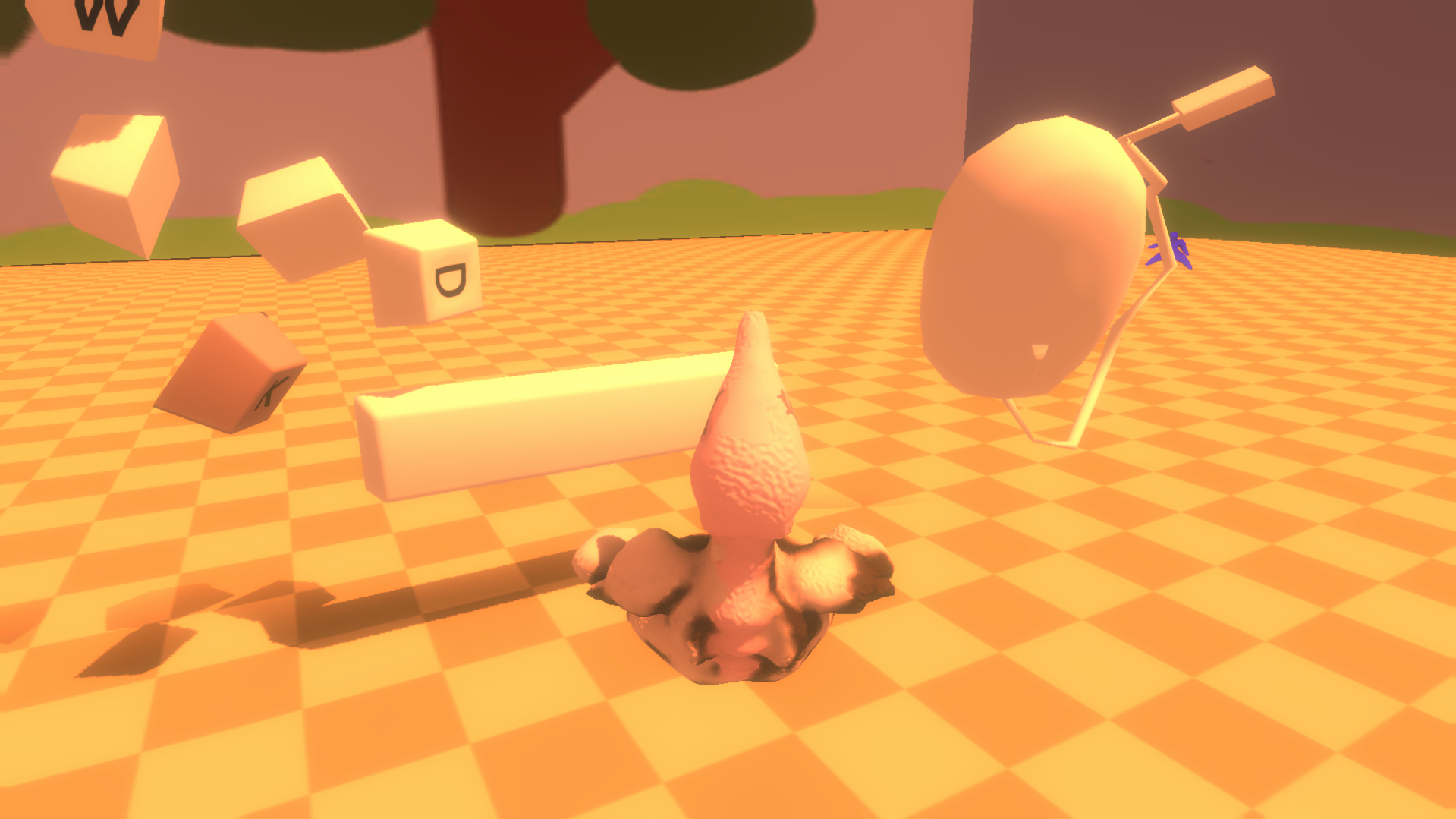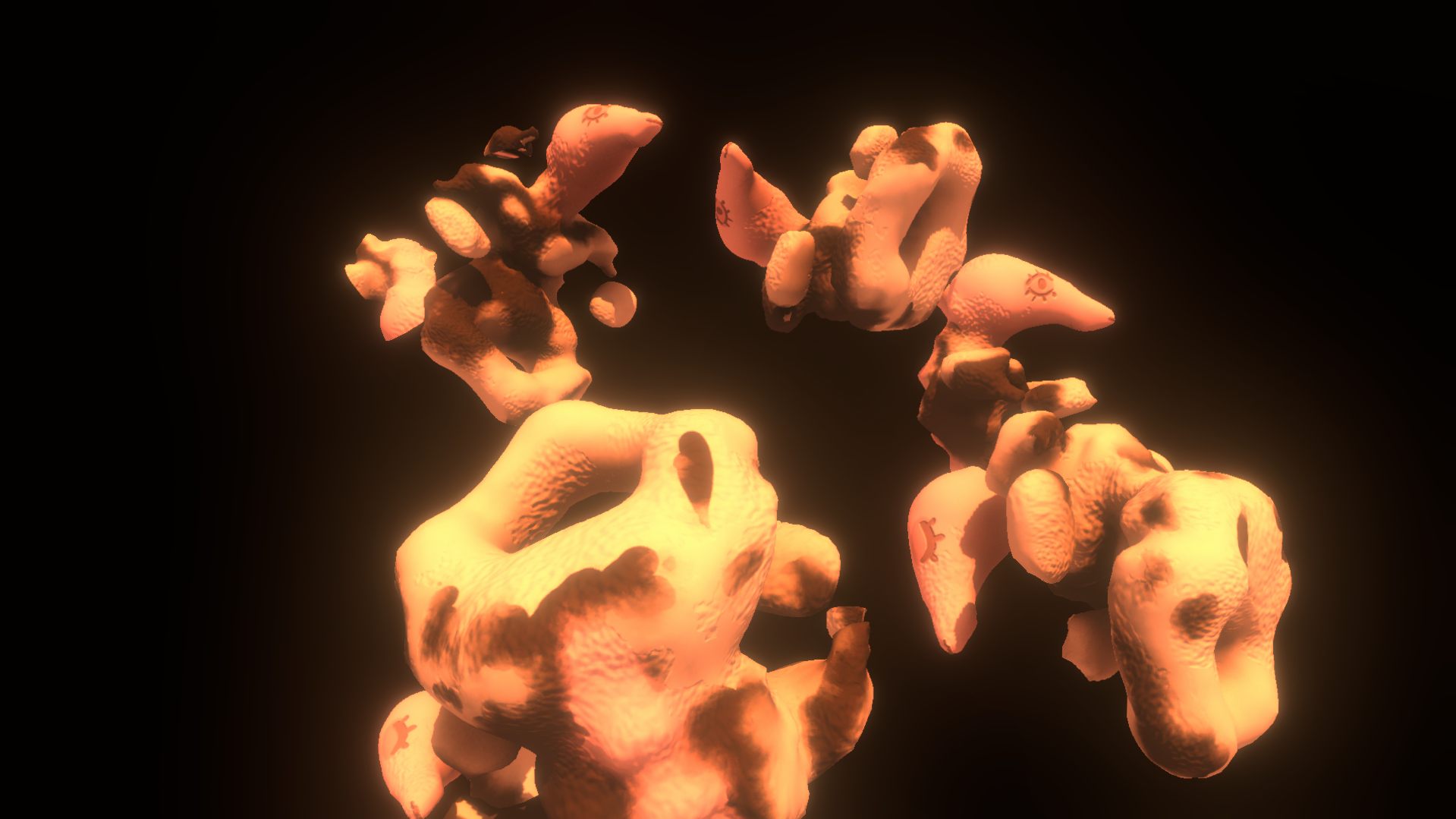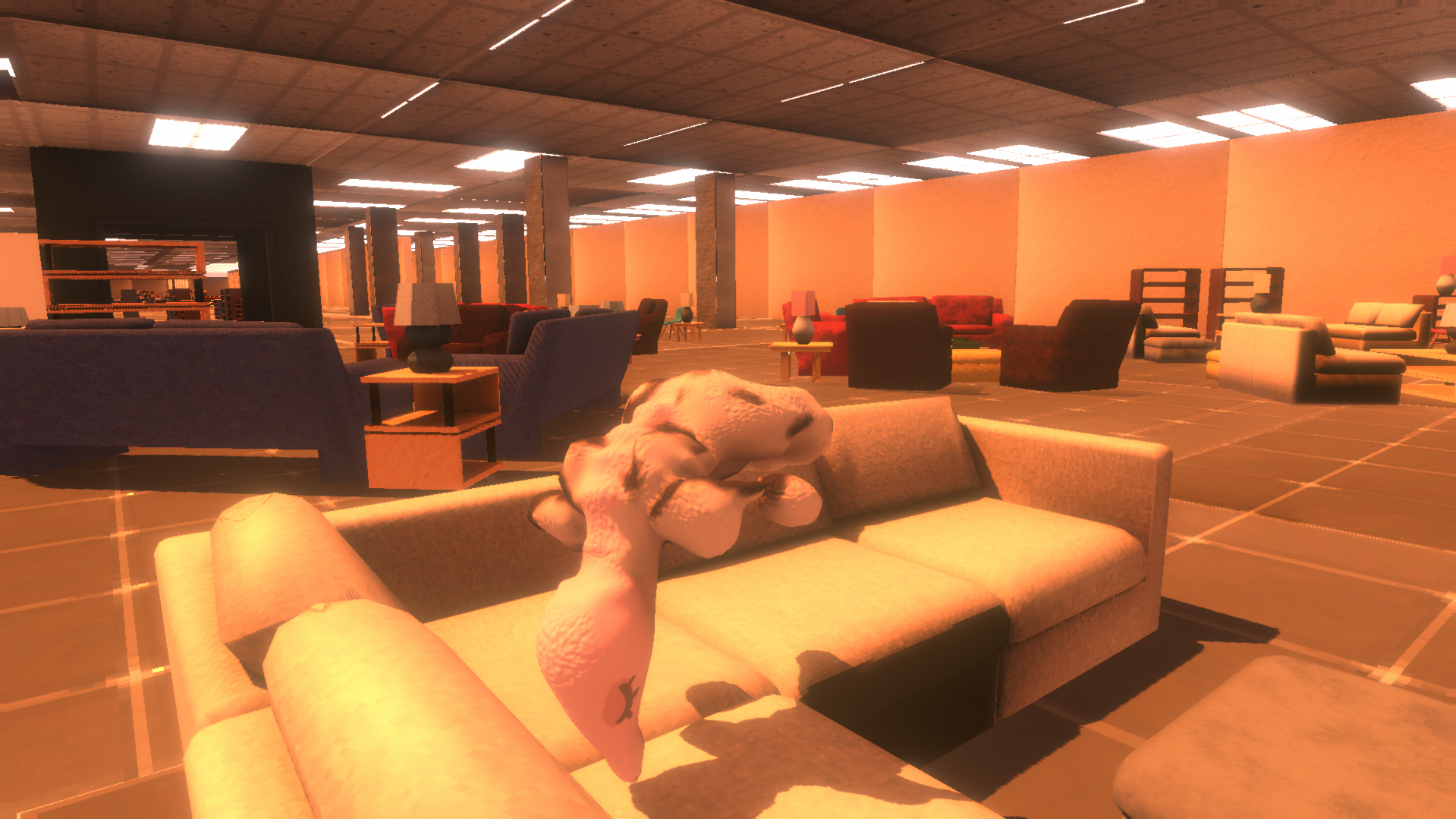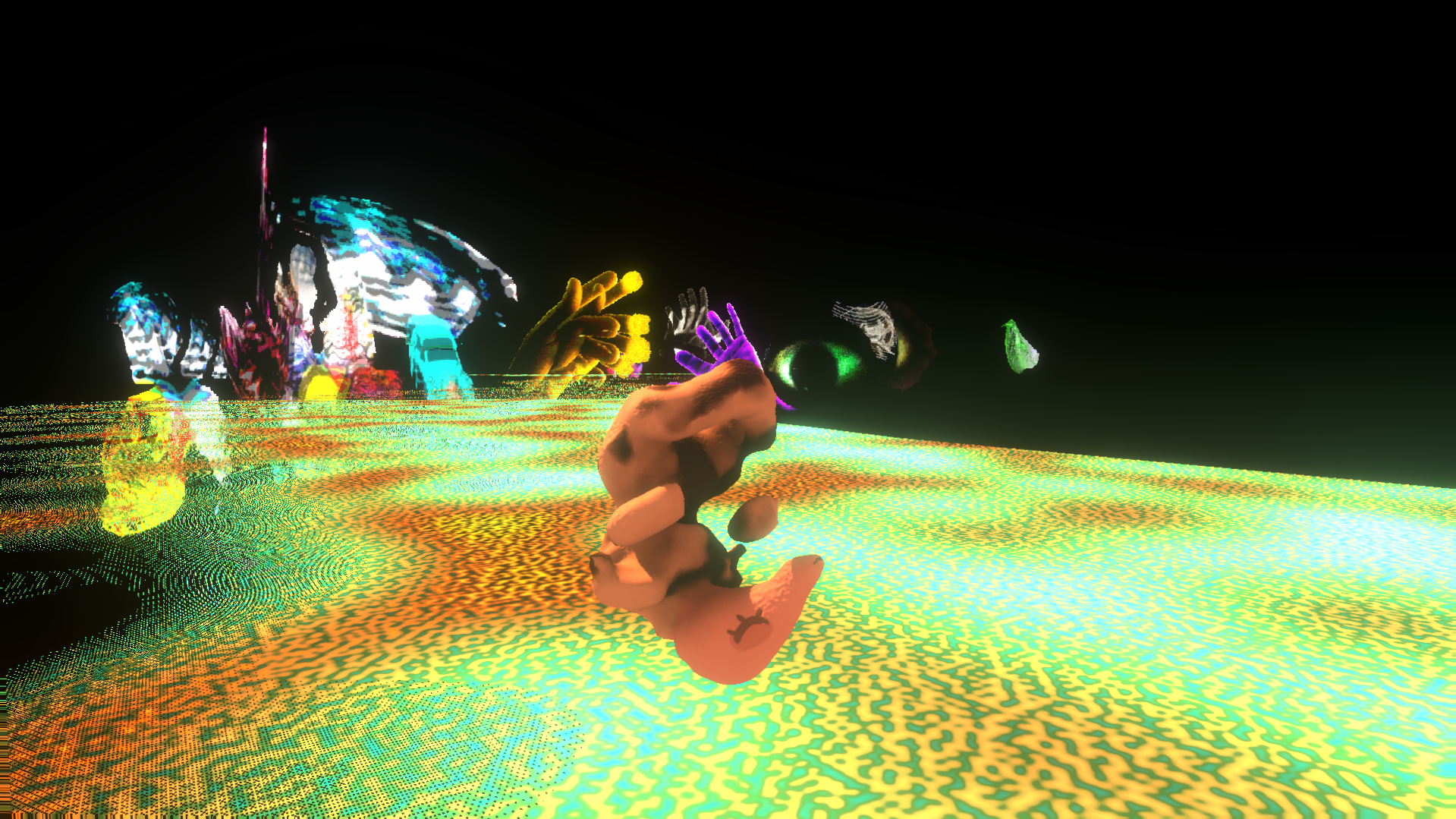Automatism in Game Development
Lucid Assemblage was developed as a part of a larger project, my final year university project. I had elected to create a Humanities Project, a project type that applies the critical inquiry of the humanities to interactive media development. As someone who cares deeply about the decision making behind creative works, it was a good fit for me.
The subject I chose for my project was Surrealism in video games. I had become fascinated with the 'surreal video game' genre - titles like Hylics 2 and Subway Midnight. Moreover, I had noticed a throughline across my games had been some kind of surreal element (see Milk, Dreamscapes, or Peripheral). Interrogating this interest further brought me to my research question: how can Surrealist philosophy be implemented in video games?
The first two stages of the project involved a comprehensive literature review of sources regarding the original Surrealist movement followed by the close readings and analysis of three case study surreal video games. Through the literature review, I identified three recurring tenets of Surrealist philosophy - dreams and the subconscious, nonconformism and rebellion, and irrationality.
To select the case studies, I looked exclusively at games that self-identified as surreal in their promotional material. Amongst the 12 titles I found that fit this criteria, I selected the three that featured two or more of the Surrealist tenets in the promo material. By this process, the games Back To Bed, Hylics 2, and Superliminal were selected for analysis.
The playthroughs of these games revealed some of the ways that existing surreal video games incorporated tenets of Surrealist philosophy - namely, dreams via narrative or presentation, nonconformism via narrative or gameplay, and irrationality via gameplay or presentation.
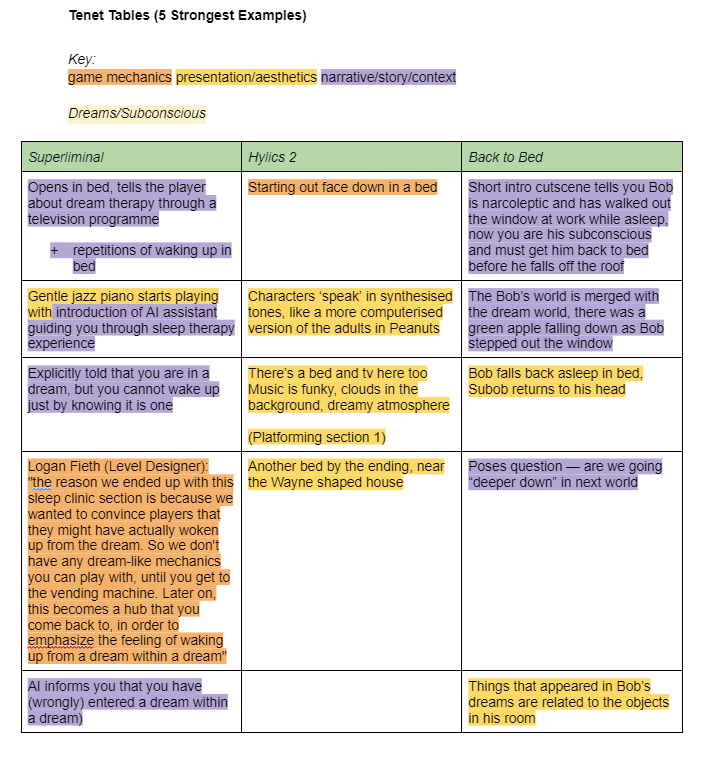
To gain further insight into the process of implementing Surrealist philosophy, it was crucial to examine the perspective of the Surrealist creator. Surrealism pertains to subconscious thought; as such, more than any surreal qualities a work may exhibit, the intent behind the work is paramount. Toward this end, I began development of Lucid Assemblage.
The fundamental design challenge of Lucid Assemblage was how to develop a video game - a meticulous, considered process - without consciously thinking about it. This contradiction is what I would contend with over the course of development.
At first, I looked to the original Surrealists' methods of creation - chance in particular. I drafted a procedure to randomly assign Surrealist tenet to method of implementation (the aforementioned narrative, presentation, and gameplay). As I did so, it occurred to me that any 'procedure' would involve conscious oversight. Whilst impossible to eliminate entirely, I went back to the drawing board, determined to minimise forethought.
In the end, it was another Surrealist methodology - automatism - that inspired the design approach for Lucid Assemblage. Automatism involves creating automatically, e.g. drawing without thinking. I broke down my typical development process (in my previous project, Hearth, I had established a new workflow) and realised that the planning phase - involving moodboards, sketches, design docs and requirements - would be the best place to incorporate automatism. Later development phases - programming or modelling, for example - required more conventional implementation, lest the project cease to function as a video game.

I employed free association to facilitate the ideation process, using the tenets as root words. To try and maximise spontaneity, I wrote a stream of consciousness paragraph immediately following free association. This paragraph would serve as Lucid Assemblage's game design document, the guidepost I returned to throughout development.
Game like a dream where you view yourself from 3rd person perspective in impossible spaces that should not exist, familiar but wrong with unnatural borders, the player can fly with effort like flapping human arms as wings and maybe play the guitar very well, you're looking for someone you can't find, you're breaking a cycle, it's mixed media with posterized photos of real world objects and human hands, you're pushing against what's normal and refuse to fit in with unbothered npcs, you're rebelling against the force of fear and it's funny and unexpected and titled Lucid Collage, and it all feels a little wrong.
The actual development of Lucid Assemblage took place over two weeks. It was my goal to serve as a conduit between spontaneously generated ideas and the Unity project on screen, translating lines like "impossible spaces that should not exist" and "rebelling against the force of fear" into gameworlds and gameplay.
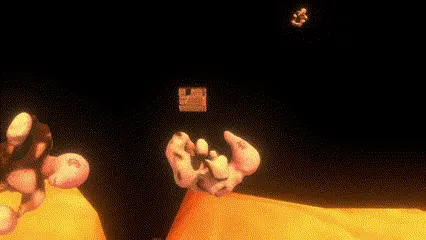
As a result of Lucid Assemblage's design, I cannot explain any particular design decision or content inclusion beyond 'I thought of it, so I made it.' In this way, Lucid Assemblage is a reflection of my mind. This approach seems to have been effective. The project was shared amongst friends, presented to a panel of two for assessment, and publicly demoed at the Interactive Media showcase, and produced the same kind of visceral response Surrealist artwork is known to.
The player character, for example, has been interpreted as a chicken nugget, the fetus of a bird, an aardvark, the chair from Beetlejuice, and more. The gameplay and imagery of Lucid Assemblage resonates with the subconscious of its players in different ways, eliciting responses personal to the perceiver. In this way, the Surrealist, automatic development process resulted in a game that exhibited surreal qualities.
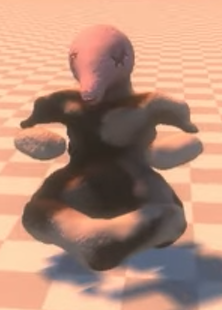
In terms of technical implementation, I experimented with new audio editing techniques in Audition, recording the majority of sound effects myself. I used a variety of tools for the game's characters, including metaballs and shapekeys in Blender and digital drawing and photo editing in Photoshop.
Due to the nature of the project, there's not much I would change about Lucid Assemblage. If I could do it again, I would want to have developed Lucid Assemblage much earlier on in the project, as there were aspects of development I thought about before I started working. Beyond that, any improvements to my technical skills - modelling, programming, environment design, audio engineering - would also probably yield a higher quality game. However, as the goal of Lucid Assemblage was to create a Surrealist video game, Lucid Assemblage in its current state fulfilled all the project aims.
